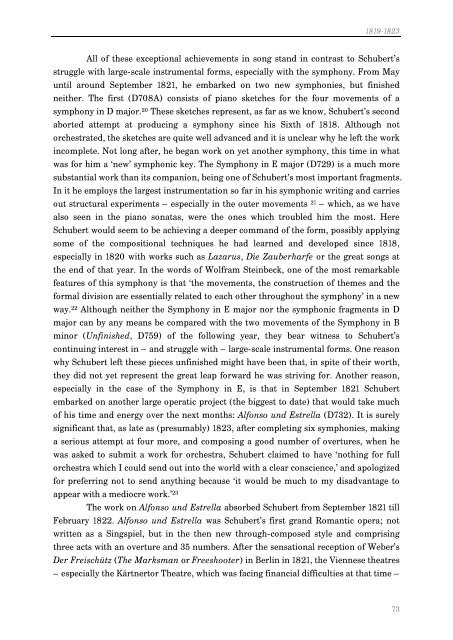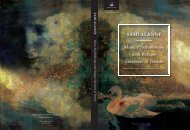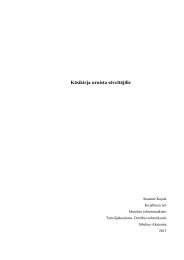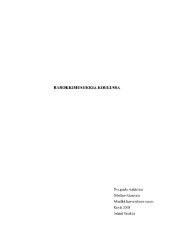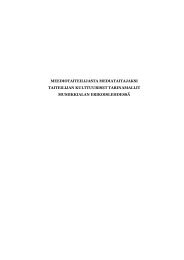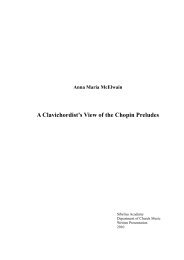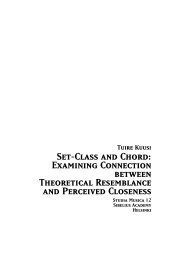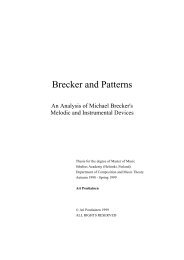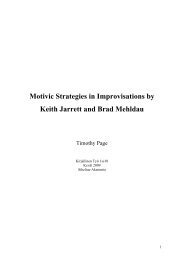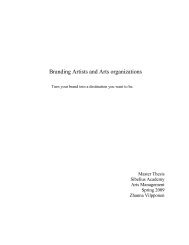The Unfinished Piano Sonatas of Franz Schubert Javier ... - Ethesis
The Unfinished Piano Sonatas of Franz Schubert Javier ... - Ethesis
The Unfinished Piano Sonatas of Franz Schubert Javier ... - Ethesis
You also want an ePaper? Increase the reach of your titles
YUMPU automatically turns print PDFs into web optimized ePapers that Google loves.
1819-1823<br />
All <strong>of</strong> these exceptional achievements in song stand in contrast to <strong>Schubert</strong>’s<br />
struggle with large-scale instrumental forms, especially with the symphony. From May<br />
until around September 1821, he embarked on two new symphonies, but finished<br />
neither. <strong>The</strong> first (D708A) consists <strong>of</strong> piano sketches for the four movements <strong>of</strong> a<br />
symphony in D major. 20 <strong>The</strong>se sketches represent, as far as we know, <strong>Schubert</strong>’s second<br />
aborted attempt at producing a symphony since his Sixth <strong>of</strong> 1818. Although not<br />
orchestrated, the sketches are quite well advanced and it is unclear why he left the work<br />
incomplete. Not long after, he began work on yet another symphony, this time in what<br />
was for him a ‘new’ symphonic key. <strong>The</strong> Symphony in E major (D729) is a much more<br />
substantial work than its companion, being one <strong>of</strong> <strong>Schubert</strong>’s most important fragments.<br />
In it he employs the largest instrumentation so far in his symphonic writing and carries<br />
out structural experiments – especially in the outer movements 21 – which, as we have<br />
also seen in the piano sonatas, were the ones which troubled him the most. Here<br />
<strong>Schubert</strong> would seem to be achieving a deeper command <strong>of</strong> the form, possibly applying<br />
some <strong>of</strong> the compositional techniques he had learned and developed since 1818,<br />
especially in 1820 with works such as Lazarus, Die Zauberharfe or the great songs at<br />
the end <strong>of</strong> that year. In the words <strong>of</strong> Wolfram Steinbeck, one <strong>of</strong> the most remarkable<br />
features <strong>of</strong> this symphony is that ‘the movements, the construction <strong>of</strong> themes and the<br />
formal division are essentially related to each other throughout the symphony’ in a new<br />
way. 22 Although neither the Symphony in E major nor the symphonic fragments in D<br />
major can by any means be compared with the two movements <strong>of</strong> the Symphony in B<br />
minor (<strong>Unfinished</strong>, D759) <strong>of</strong> the following year, they bear witness to <strong>Schubert</strong>’s<br />
continuing interest in – and struggle with – large-scale instrumental forms. One reason<br />
why <strong>Schubert</strong> left these pieces unfinished might have been that, in spite <strong>of</strong> their worth,<br />
they did not yet represent the great leap forward he was striving for. Another reason,<br />
especially in the case <strong>of</strong> the Symphony in E, is that in September 1821 <strong>Schubert</strong><br />
embarked on another large operatic project (the biggest to date) that would take much<br />
<strong>of</strong> his time and energy over the next months: Alfonso und Estrella (D732). It is surely<br />
significant that, as late as (presumably) 1823, after completing six symphonies, making<br />
a serious attempt at four more, and composing a good number <strong>of</strong> overtures, when he<br />
was asked to submit a work for orchestra, <strong>Schubert</strong> claimed to have ‘nothing for full<br />
orchestra which I could send out into the world with a clear conscience,’ and apologized<br />
for preferring not to send anything because ‘it would be much to my disadvantage to<br />
appear with a mediocre work.’ 23<br />
<strong>The</strong> work on Alfonso und Estrella absorbed <strong>Schubert</strong> from September 1821 till<br />
February 1822. Alfonso und Estrella was <strong>Schubert</strong>’s first grand Romantic opera; not<br />
written as a Singspiel, but in the then new through-composed style and comprising<br />
three acts with an overture and 35 numbers. After the sensational reception <strong>of</strong> Weber’s<br />
Der Freischütz (<strong>The</strong> Marksman or Freeshooter) in Berlin in 1821, the Viennese theatres<br />
– especially the Kärtnertor <strong>The</strong>atre, which was facing financial difficulties at that time –<br />
73


